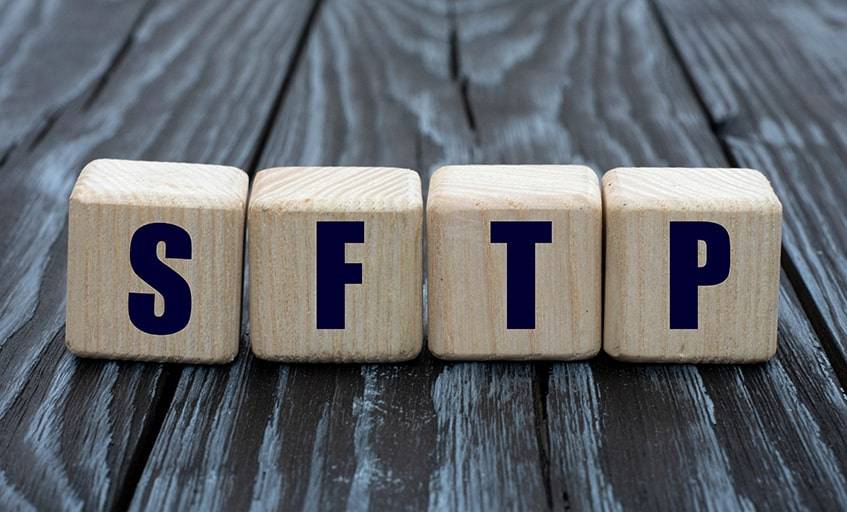It’s safe to say almost everyone has attempted to send an email attachment and gotten the “file size exceeds limit” message. It is common for most services to restrict attachment sizes. Fortunately, several options can help for free. Here is a comprehensive list of the best services to use to send large files in 2023.
Table of Contents
How to Send Large Files: Choosing a Method

Trying to complete such a task on the internet could be overwhelming. There are great options to choose from, each with its strength. While contemplating how to send large files over the internet, it’s good to review the available offerings and find a good pick. Here’s an overview of top products in the market for 2023.
What’s the Deal With Cloud-Based Storage Services?
Cloud-based services are a popular and user-friendly option to send large files. Almost all devices support them. With this method, subscribers can upload documents using a service that stores their papers for them. The necessity to send documents via email is out of the way. Recipients download the files with a link. Many of these services are free to sign up for, but it is usually possible to pay for more storage if needed.
Google Drive
The Drive features a free cloud-based storage plan; there is no confusion about sharing big files on it. They allow everyone up to 15GB of space to store media, and there is no limit to file size. Subscribers also have the option to pay for extra memory. Here are the current prices as listed on their website:
| Price Per Month | Available Memory |
| Free | 15GB |
| $1.99 | 100GB |
| $2.99 | 200GB |
| $9.99 | 1TB |
| $49.99 | 10TB |
Dropbox
Dropbox is a top competitor in web-based storage. Subscribers can send big files with ease across several platforms. The app is compatible with almost every operating system. Dropbox gives users the ability to access their information on any device. In 2023 the free space on offer is not very competitive. Subscribers can only store 2GB of data before paying and can send media up to 100MB. Their current prices for individual members:
| Plan | Prices Per Month | Available Memory | File Share Size |
| Plus | $11.99 | 2TB | Up to 2GB |
| Professional | $19.99 | 3TB | Up to 100GB |
OneDrive
OneDrive is Microsoft’s version of Google Drive. Its seamless integration with and support for Windows 10 and Microsoft Office apps is impressive. Customers who have Outlook for email in will likely find OneDrive especially useful. They offer 5GB of space and a 15GB file sharing limit for free, and their paid plans are affordable.
| Plan | Price Per Month | Available Memory | File Share Size |
| Basic | $1.99 | 100GB | 100GB |
| Personal | $6.99 | 1TB | 100GB |
| Family | $9.99 | 6TB total, or 1000GB per person | 100GB |
Using Cloud-Based Storage: Pros and Cons
This method to upload large files does not work for everyone. Top concerns include privacy, cost, and dependence on internet connection.
Pros:
- User-friendly: Sending documents is as simple as shooting an email or sharing the direct link to the file
- Cost-effective: Users have the option of using free or paid plans
- Collaborative: Most services allow collaboration on documents
- Convenience: Users can access their information from anywhere with internet access
Cons:
- Security: No web-based storage is totally free from security threats. This could be a big issue if it happens
- Internet Usage: Users need a good internet connection to access their media.
The Appeal of Free Online Services

Cloud file-sharing is interesting, but most of them do have limitations on file sizes. Web-based file sharing is a popular method of sending sizable documents. A quick search for these sites reveals how many services are out there. Even some don’t need users to make an account, which is a plus for many. Take a look at some of the forerunners out there:
Hightail
Hightail is free to sign up for and makes it easy to share large files on. It’s a cloud-based storage service geared more towards businesses. It provides enormous support for collaboration. Hightail makes it easy to assign, preview, and approve tasks among a team. There is a free plan, but it only offers 2GB of space. It lets people upload documents up to 100MB.
| Plan | Price Per Month | Available Memory | File Share Size |
| Pro | $12 | Unlimited | 25GB |
| Teams (1-30 users) | $24 | Unlimited | 50GB |
| Business (3+ users) | $36 | Unlimited | 500GB |
Smash
Smash users do not need an account to be able to complete a free massive file transfer. There is no file sharing limit size on Smash. Anything larger than 2GB will take longer to download unless one has an account. Account members can send any file size on time. This platform does not permit having documents stored on it.
| Plan | Price Per Month | Available Memory | File Share Size |
| Pro | $10 | None | Unlimited |
| Team (up to 5 users) | $20 | None | Unlimited |
SendSpace
This site is used for both storing and sending files. They offer unlimited lifetime space, but people can use the site for 30 days without paying. With the free trial, it’s possible to send attachments up to 300MB. This is fine for people who only need it for a short time and don’t have much to send.
| Plan | Price Per Month | Available Memory | File Share Size |
| Pro Base | $8.99 | Unlimited | 5GB |
| Pro Plus | $19.99 | Unlimited | 10GB |
Pros and Cons of Free Online File-Sharing
The amount of options available for web-based file-sharing is mind-boggling. It can be hard to decide which one to try and sometimes even figure out which are legitimate. Read reviews from trusted sources before trying a product that is not well-known.
Pros:
- No strings attached: Often, it is not necessary to open an account to use these services
- Unlimited sharing: Many of these sites do not place a limit on file sizes
- No software downloads
- Easy to use: There are many options for accessing online services
Cons:
- Limited free features: Some sites place limits on the size of documents users can send for free
- Speed: file transfer speed might go down for those who are not paying for the service sometimes.
How to Send Large Files via Email: A Comprehensive Guide

Figuring how to send large files via email might be tricky; it becomes second nature after learning. The easiest way to do this is through cloud-based services. Generally, most people already have free access to them through their email service.
Using Cloud Storage
When sending media electronically, online mail is always the go-to method. Luckily, using a cloud service to email a large file is simple.
- Upload the documents to a preferred platform, such as Google Drive, OneDrive, or Dropbox.
- When ready, send the file to the recipient and let them know when it has been sent.
- With Outlook or Gmail, a file can still be attached via email. Just click on the Google Drive or OneDrive button in the inbox.
- The recipient can either download the file on their computer or access the service through the website.
WeTransfer
WeTransfer users will quickly figure out how to share large files without a fuss as only the sender’s and recipient’s emails are needed. It proceeds to put the sent documents in storage. A clickable link is then sent to access the file. This way, subscribers can email large files at once. The free plan doesn’t require one to sign up and supports file sharing up to 2GB at a time; the paid plan does 10GB. Additionally, up to 50GB is available to paid subscribers.
| Plan | Price Per Month | Available Memory | File Share Size |
| Free | Free | None | 2GB |
| Pro | $12 | 1TB | 10GB |
FileMail
FileMail is another easy way to send files via email, as well as store them. Without creating an account, users can send media up to 30GB. Customers can transfer documents with data encryption and virus scanning. Users can also embed FileMail uploaders onto their websites.
| Plan | Price Per Month | Available Memory | File Share Size |
| Pro | $12 | 100GB | Unlimited |
| Business | $15 | 1TB per user | Unlimited |
| Enterprise | $49 | 5TB per user | Unlimited |
DropSend
This service offers big file sharing and storage only for paid members. The free version lets users send just five files per month up to 4GB each. One of the nice things about this service is the help they offer users how to email large files, including step by step instructions and videos. Potential drawbacks include a low amount of space and limits on how many files users can send per month.
| Plan | Price Per Month | Available Memory | File Share Size |
| Basic | $5 | 1GB | 8GB |
| Standard | $9 | 10GB | 8GB |
Pros and Cons of Using Cloud-Based Storage
Cloud-based websites are a top contender for sending emails. Some people are drawn to the appeal of taking advantage of these services with no strings attached, especially if they want to send one or two things quickly.
Pros:
- Easy to use: Most services contain step-by-step instructions on their websites
- Free membership for some
- Added security with most paid memberships
- Members can send files without downloading any software
Cons:
- Free memberships almost always restrict file sizes
- Unless specified on the website, the safety of files can be questionable.
Compress Your Files into Smaller Sizes

File compression services can help when people have multiple items to send. This software saves time and space by compressing files while keeping them safe and preserving their integrity.
It is more common for people to compress documents for the business they work for, or if they regularly send personal media and are more tech-savvy. Nevertheless, it is not particularly difficult to learn how to send large files with this method, and anyone could probably learn.
Pros and Cons of File Compression
One way to ramp up efficiency in file backup is compression. The internet, with its limited bandwidth and makes it a necessity. The pros and cons of this are listed below.
Pros:
- Compressing multiple files is much quicker than sending each individually
- Text or PDF files compress well
- This software can compress entire folders very quickly
- Files take up less space
Cons:
- Resizing files may affect their quality as seen in; images, songs and videos
- This method is not quite as user-friendly as cloud-sharing. It may be hard to figure out how to transfer large files this way for most people.
Utilizing the FTP Function
FTP (File Transfer Protocol) is a trustworthy method for transferring files from one person to another. This approach has been around since the 80s. With FTP, users click a link to a port, and documents are generally sent without a hosting service such as OneDrive or Google Drive to store them first. FTP is probably not the best way to send large files for the general public, however. It’s safe to say most people who use it either do it for their business or are old-school and tech-savvy.
Pros and Cons of FTP File-Sharing
There are enough resources to learn how to share large files between two devices over a network. FTP makes use of this window for communication. However, it is not without drawbacks.
Pros:
- There are no limits to the proportion of files allowed
- People can use this to send entire directories at once
- If an internet connection is lost while transferring files, this function will pick up at the last stopping point rather than having to start the process again
- FTP can schedule transfers for a later time, so it will not affect work in progress
Cons:
- FTP is more complex than web-based file sharing
- Since FTP is somewhat antiquated, its vulnerabilities are well-known. This makes it an unsecured method to transfer files.
Secure File Transfer Protocol (SFTP)

As implied by the name, it is mostly the same as FTP, except it has an added feature for sending files. SFTP requires a password for use.
Pros and Cons of SFTP for File-Sharing
SFTP is a great innovation over FTP with its distinctive password feature. Although this has made it more desirable for everyday use, it is still not perfect.
Pros:
- There is less likelihood of vulnerability due to the added security
- It is a reliable method of the file transfer
- Unlimited file capacity, like FTP
- Ability to send entire directories of files
Cons:
- It is more complex and less user-friendly to set up compared to FTP
- Less cost-effective.
Use a Hard or Flash Drive
When sending large documents, some people opt to use a USB flash, which provides a fixed amount of space. External hard disks are the same thing, but bigger. Both connect to a computer via USB, and files are dragged and dropped. Next, plug the same drive into the desired recipient computer and retrieve the files. Some devices come with passwords to protect sensitive data.
Pros and Cons of External Devices
Hard drives find use when files are to be shared locally. They have fixed maximum capacity, but they are very much in circulation. Here, issues peculiar to them are laid bare.
Pros:
- They are plug and play devices, therefore easy to use
- After the initial cost of purchase, there are no recurrent tariffs associated
- If privacy is a concern, free encryption tools help to keep data secure
- Physical media for file transferring is a relatively quick method
Cons:
- Cost of purchase increases with capacity. The cloud might be cheaper for access to substantial storage
- Having files on a physical device leaves them vulnerable to getting lost, damaged, or adverse weather conditions, etc.
Connecting to a VPN Before Sharing Files

A Virtual Private Network gives users more privacy. It routes the connection through a secure server. Users need a password to link up with the network. Some VPNs contain a portal with features that allow people to transfer files, but not all of them do. This is typically not the ideal way to send files – it would be better to use a website service that offers secure file transfers.
Pros and Cons of Using a VPN for File-Sharing
VPN offers an alternative to file transferring over a secure network. However, because of the very nature of VPNs, other factors limit their effectiveness. Here they are pointed out.
Pros:
- Users can share files securely for extended periods
- They are always available, regardless of location
- VPN guarantees anonymity, taking secure sharing up a notch
- They are inexpensive to use
Cons:
- Sizable files can slow down VPN connection and affect the quality of the files
- It’s an extra step to achieve a secure file transfer method. It would be faster to use a secure file-transfer service.
Shouldn’t We Just Be Able to Email Large Attachments?
Sending any size file on email seems simple enough, and it’s safe to assume people would think this should be the best way to send large files. So, what gives? Do big companies like Gmail or Outlook only want to save money? Do they want customers to sign up for their file-sharing services? The real reason seems less sinister and is understandable from a business perspective. If users were able to email massive files continuously, their use would be slowed down considerably. As a result, their customers probably would not send smaller attachments or even emails as quickly.
Want to Transfer Large Files? Things to Keep in Mind
If there is a need to transfer large files regularly, make sure to get ahead of these consequences to store those type files:
Reduction of space
Even the files that remain in the “sent” folder count towards the storage quota. This means they can trigger the dreaded “running out of space” message. Be sure to regularly visit the system settings and clean out big files that are not needed anymore.
Slower computer speeds
One of the first things to check when a computer is slowing down and becoming difficult to use is the amount of data and files stored. Large files sitting in the system can bog down speeds and make any simple task seem arduous and frustrating.
Possible crashes
Excessive space used up by multiple large files can even lead to the system freezing or crashing. It’s essential to make sure such files aren’t taking up space unnecessarily to avoid losing important progress.
Frequently Asked Questions
What Is the Largest File Size Gmail Can Send?
Gmail only allows users to send email attachments not exceeding 25MB. However, Gmail has integrated Google Drive into its mailing service. They enable users to send large files by clicking the “Drive” button – if the files are stored on Drive.
How Can I Send a Large File Without the Internet?
The easiest way to share large files without the internet would probably be with devices such as a USB flash or external hard drive. All one needs is a computer with the files on it, and a device to transfer it to.
How Do I Compress JPEG Files?
As mentioned previously, standard file compression services can affect the quality of the images. To get around this, use a program like Microsoft Paint or Word to resize the image and then save it. This will reduce the file size and make it easy to transfer. In Word, upload the photo to a document, and find the option in the “format” tab to compress pictures.
And the Winner Is…?
Unfortunately, there is no “one-size-fits-all” answer! When transferring archives, the method chosen will depend on the purpose and the nature of the file. People who have to send multiple documents regularly are probably better off using cloud-based sites.
Those who are more tech-savvy and have a high volume of files to transfer might prefer to use either an FTP or SFTP server. Sensitive data, such as health information protected by HIPAA, are best transferred using a VPN.
Share a preferred method of sharing files or a favorite service in the comments section!

Comments